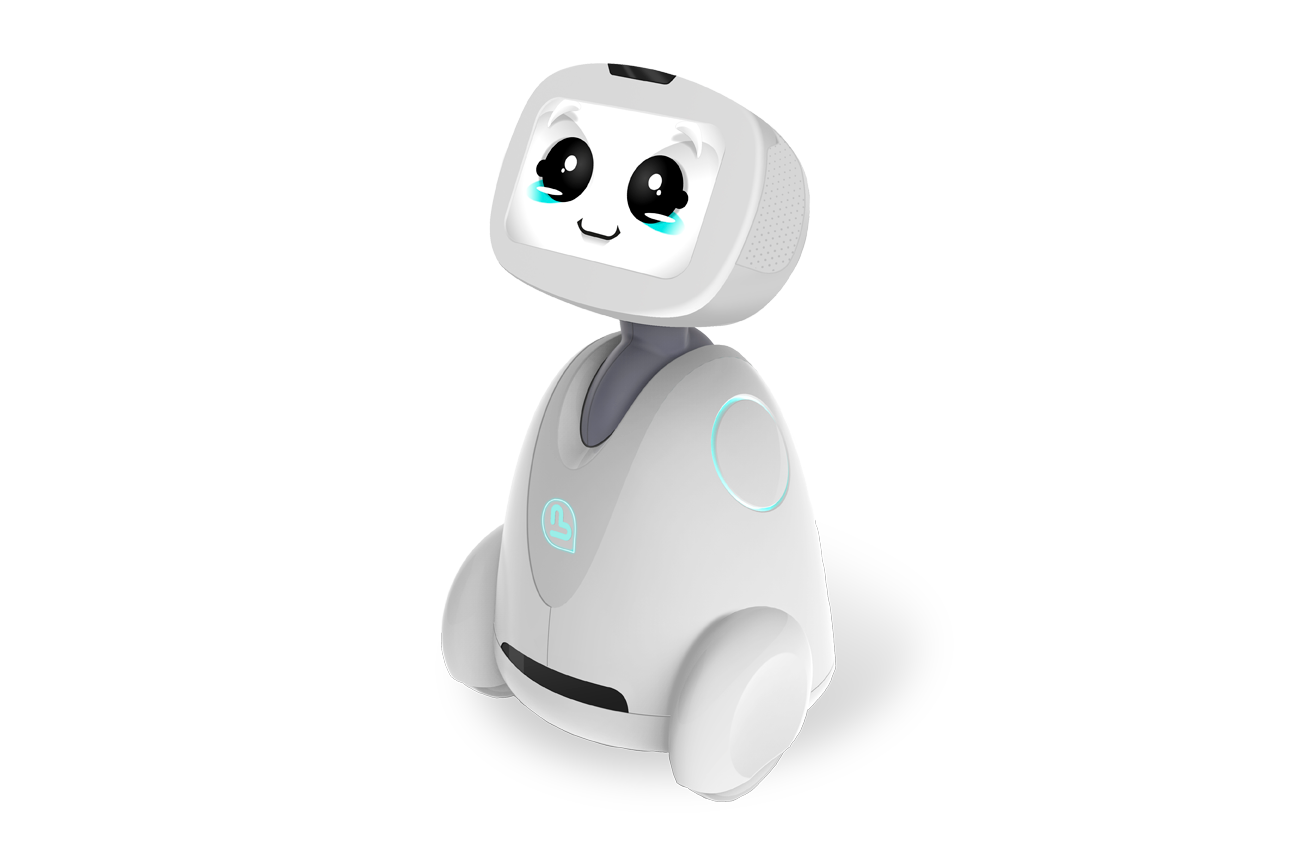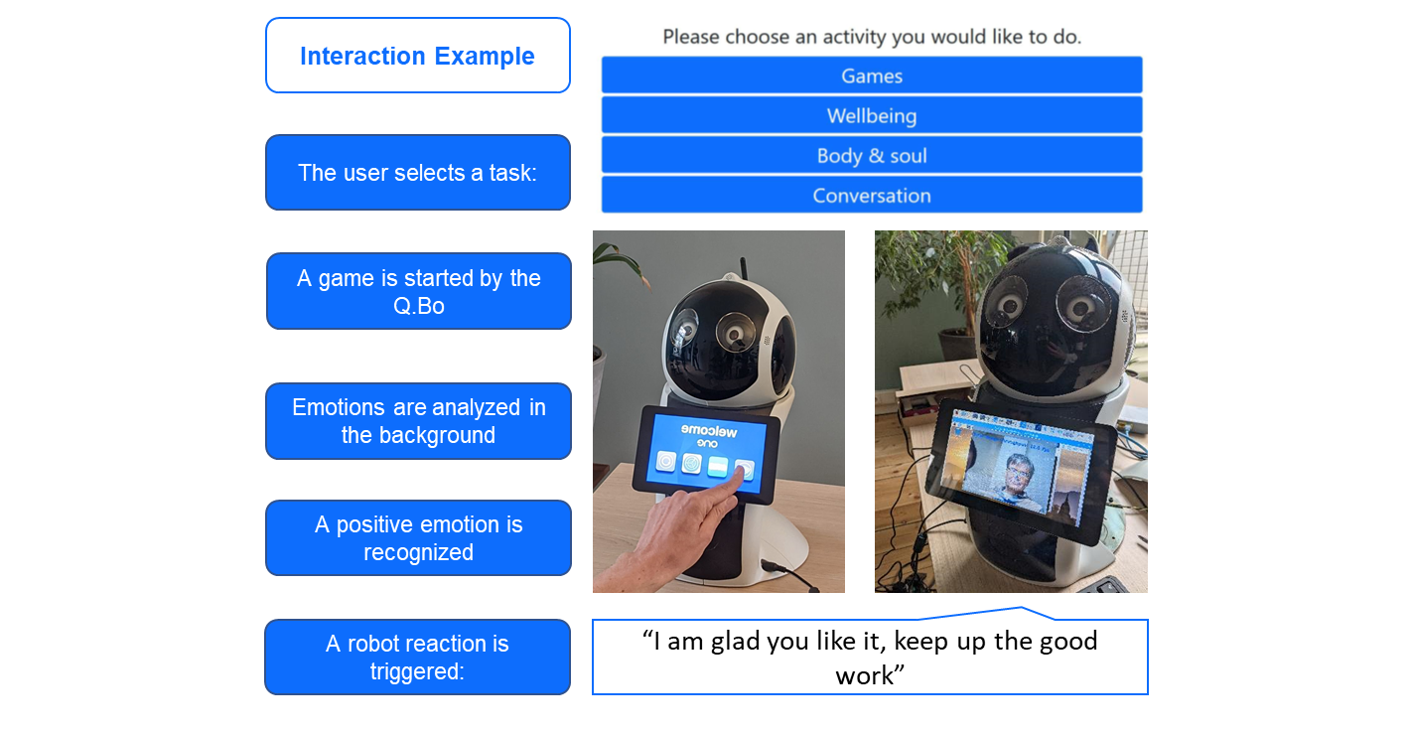We have officially finished the project and would like to thank all partners and participants for their contribution to the project. We are very happy to have successfully been able to test a prototype of the software and gain important insights. The detailed deliverables can be found on the website, but here we briefly summarize our main findings.
User requirements
We have performed quantitative and qualitative research to asses user requirements. Users on average rated the utility of robots high and did not report high robot anxiety. Some important insights for the target group are that the social robot solution is regarded most beneficial for older age groups who live alone, feel lonely or have minor cognitive or physical impairments. Some things that people appreciated were the personalization of the robot (e.g. changing the name, voice) and attention to autonomy (e.g. with friendly phrases, questions).
Emotion detection and behaviour change robot support system
We were very happy to be able to create a prototype that was able to incorporate dynamic responses based on the emotions of the user. For example, if an exercise was done but someone appeared to look negative a few times, the robot would ask if the user would want to stop the interaction. Although the Q.Bo still had some limitations (in hardware and speech), it was able to run without large errors. Most people were drawn to the robot and liked the idea of being able to interact with it. Two third of the participants thought the triggers were motivating. Although some also indicated the emotion-based triggers did not feel right. There is still work to do to make it suitable for all users and allow for more diverse interactions.
Future directions
With more improvements (better hardware, better analysis and more personalization) the robot has real potential to benefit older users. If the program is motivating and will lead to more interactions it is more likely people will adapt their behaviour and well-being. Luckily, a follow-up project was awarded funding by the EU so that we can continue developing this robot support system. In this project we will use a more advanced robot system, the Buddy (Blue Frog Robotics), to make this emotional robot an empathic robot.

